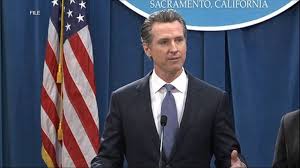

- Ref # CAE00001
- November 22, 2020
The Governor’s Moratorium on Death Penalty Executions
California voters have twice voted to continue the use of the death penalty; in 2012 and again in 2016 (Prop. 66). Shortly after being elected Governor of the State of California, and after making campaign promises that despite his misgivings about the death penalty he would not interfere with the will of the voters, Governor Gavin Newsom signed Executive Order N09-19 effecting a moratorium on capital punishment in California. In so doing, Governor Newsom lied. He also violated the California Constitution, Article 5, Section 1, where it is mandated that a governor is bound to “see that the law is faithfully enforced.” But the Governor’s dishonesty and lack of integrity aside, you might be concerned with how this moratorium affects death penalty cases, new and existing, in California? The bottom line is that the death penalty in California is still alive, even if not so well. Governor Newsom did not grant any of California’s 737 existing death row inmates a reprieve, pardon, or commutation in that to do so—at least in any case where the inmate has two or more felony convictions (which is virtually everyone on death row)—a majority of the California Supreme Court has to give their approval (Cal. Const., Art 5, § 8). So it is pretty much understood that Governor Newsom’s moratorium on executions in California exists only so long as he occupies the Governor’s mansion. (See concurring opinion in People v. Potts (Mar. 28, 2019) __ Cal.5th __ [2019 Cal. LEXIS 2044].) When he goes away, the moratorium goes away (depending upon the proclivities of whoever takes his place). There are even some good arguments to the effect that specific provisions in his moratorium (e.g., repealing California’s lethal injection protocol and closure of San Quinton’s death chamber) are illegal and unenforceable; issues that have yet to be tested. In the meantime, the moratorium does nothing to prevent all the existing death penalty verdicts from continuing their slow crawl through the appellate court system. It also does not prevent prosecutors from seeking death sentences in new cases. All the moratorium does is aggravate the already excruciatingly slow death sentence appellate procedures with a bottleneck of the existing death penalty verdicts at the (temporarily dismantled) death chamber’s door, waiting until a new governor is elected who determines to carry out the will of the people.







